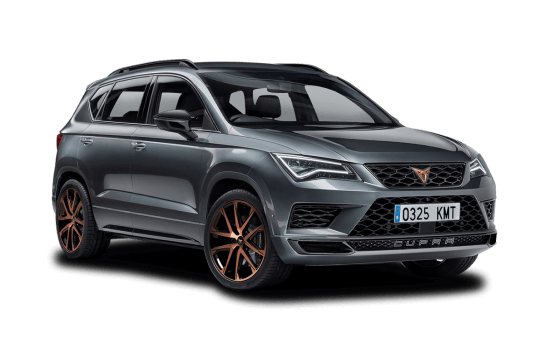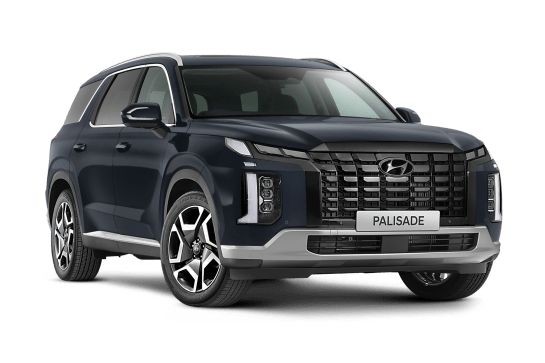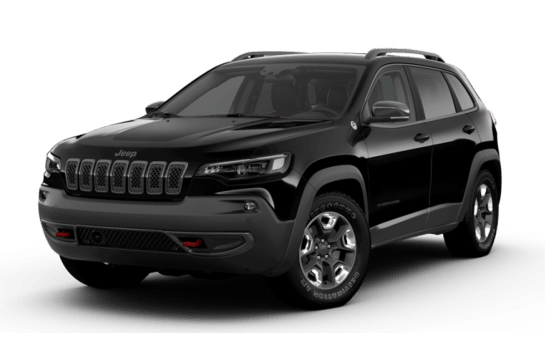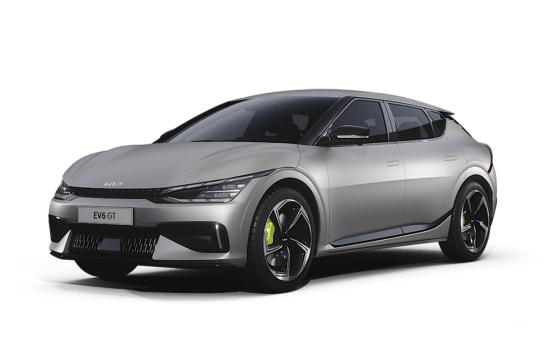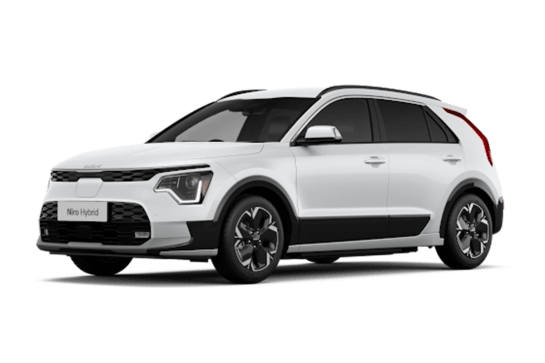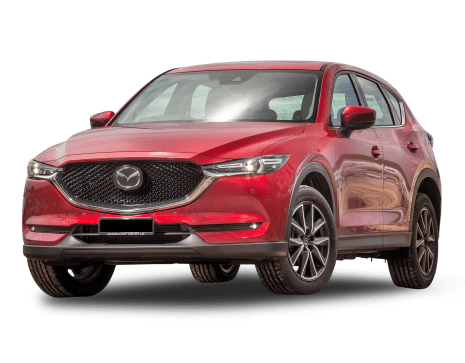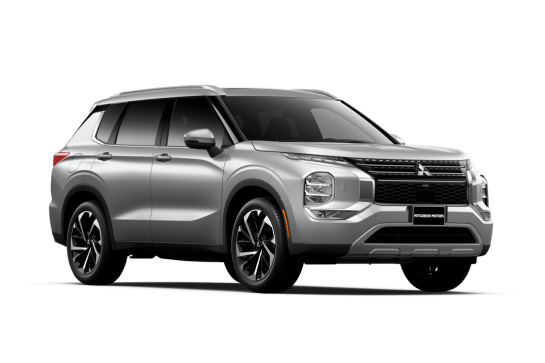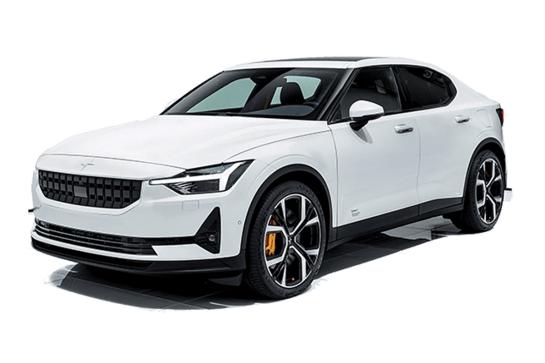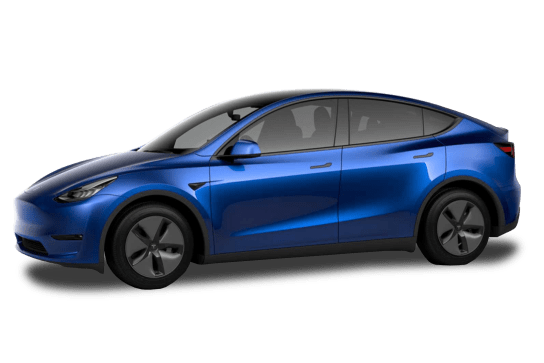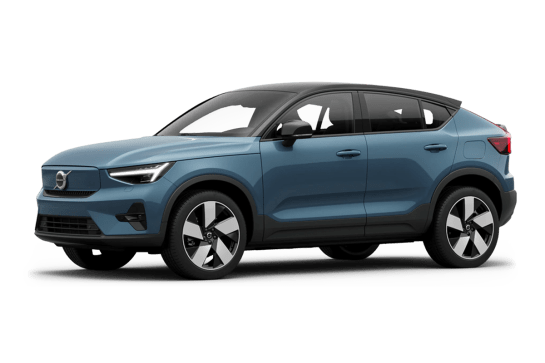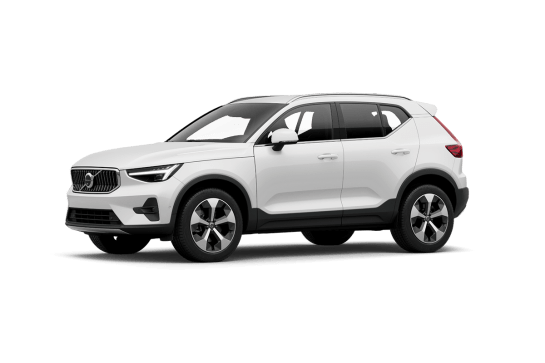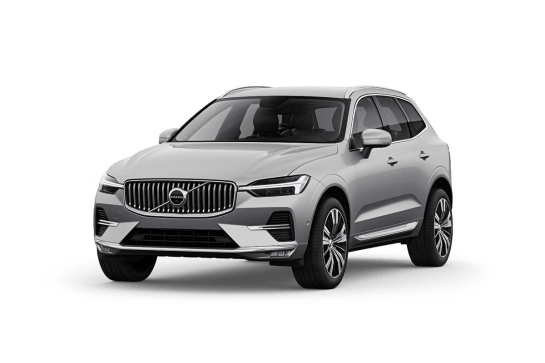
Land Rover Discovery Sport VS Honda ZR-V
Land Rover Discovery Sport
Likes
- Cabin is both large and practical
- Economical to run
- Mostly smooth to drive
Dislikes
- Paying extra for features may irk
- More expensive than flagship model
- Some tech needs work
Honda ZR-V
Likes
Dislikes
Summary
Land Rover Discovery Sport
The Land Rover Discovery Sport is the sort of Land Rover you consider if you're not that serious about going off-road but still want something capable, but you don't want a car as large as it's Range Rover cousins.
Bonus points, the P300e mid-spec model I'm testing this week is a plug-in hybrid. So, you get the best of all worlds - capability, decent size and economy.
The new powertrain pits it against the Lexus NX450+, Volvo XC60, Audi Q5 and even the BMW X3 but while the P300e is great on paper, how does it stack-up in real life?
Read more about
- Land Rover Australian sales through the roof: Defender, Discovery and Range Rover Evoque star in spectacular year-on-year increases that leave competitors like Jeep, Mercedes-Benz and Audi in the shade
- England's pricey answer to the Suzuki Jimny? Baby electric version of Land Rover Defender coming by 2027 - report
- But what does it stand for? Land Rover brand axed as Jaguar Land Rover renamed 'JLR' to launch Range Rover, Discovery, Defender and Jaguar as individual brands
| Safety rating | |
|---|---|
| Engine Type | 1.5L turbo |
| Fuel Type | — |
| Fuel Efficiency | 2.1L/100km |
| Seating | 5 seats |
Honda ZR-V
The Toyota RAV4 has plenty to answer for.
Firstly, it kicked off the whole mid-sized SUV craze 30 years ago, decimating hatch, sedan, wagon and coupe sales en masse, to change the way people thought about family cars.
Then, in 2019, the company launched the first mainstream hybrid SUV in Australia, opening up the electrification floodgates. Now everybody wants one.
Read more about
Think about that for one moment. Before the RAV4 hybrid, there were none bar expensive Lexuses like the NX and RX. Rav-dical!
Now there are over 15 different choices, with the Nissan X-Trail and Honda ZR-V hybrids being two of the newest on the scene.
We pit these fresh electrified mid-sized SUVs against each other to find out which might be right for you.
| Safety rating | — |
|---|---|
| Engine Type | 2.0L |
| Fuel Type | — |
| Fuel Efficiency | 5L/100km |
| Seating | 5 seats |
Verdict
Land Rover Discovery Sport7.6/10
The Land Rover Discovery Sport P300e has a beautiful and practical cabin space. The powertrain didn't always convince me on the road but it does offer decent economy, if you charge it often.
The media system left a lot to be desired and having to pay around $15K extra for all of the customisations means it's not as affordable as what it initially seems. Still, if you’re looking for a plug-in hybrid with a great cabin and on-road looks, this is a good option.
Honda ZR-V/10
You’re looking at are two of the very best medium-sized SUVs out there. Regardless of price and position. Honestly, either should bring many years of sterling service.
Which one is for you depends on what that service needs to be.
The X-Trail e-Power is the better family-car allrounder, hands down, because of offers way more metal for the money, making it roomier and more practical. It’s also quieter, for some of the time at least.
But the ZR-V is athletic, agile and involving in a way the Nissan could never be. It’s also better equipped at this price point. And despite being from half-a-segment below, it’s still competitively packaged and feels from a class above.
We should be comparing this charming Honda against the Audi Q5 Sportback and BMW X4, it’s that special.
Whichever you choose, Toyota really needs to pull something out of the box with the next-gen RAV4 to beat these two.
Nissan X-Trail Ti e-Power | 8.5/10 |
| Honda ZR-V e:HEV LX | 8.6/10 |
Design
Land Rover Discovery Sport
The updated Disco Sport gets new underpinnings which are shared with the Range Rover Evoque.
The body has seen a minor facelift but honestly, it’s so slight only die-hard fans will notice anything different. Overall, it still has the styling that people know and love.
It’s once you head inside that the facelift becomes far more apparent. Gone is the more traditional looking e-shifter and in its place is a rather nubby-looking one.
The dashboard looks more streamlined and features wider padded accents and in our test model, we have the Oyster and Black upholstery which does make it look quite luxurious. There are a few too many blank spaces for me personally but it looks slick.
Accentuating the dashboard is a floating-effect multimedia system and a large digital instrument cluster – both of which look great but there are no other control buttons or dials. I’m not a fan of the fact that you’re 100 per cent reliant on the tech screens and I'll explain why in the Practicality section.
The optioned panoramic roof makes the cabin feel airy and it's cool that it has a memory function – it will close when you turn off the car but reopen upon starting again.
Honda ZR-V
Before we kick off on design, here are two annoying facts about the Honda.
First off, apparently ZR-V stands for Gen-Z Recreational Vehicle. Trying hard much, Honda?
Or maybe not trying hard enough. In Australia, the ZR-V colour range is pitiful, with just five choices against the Nissan’s dozen.
Please, at least import the 'Aqua Green' and 'Petrol Blue', as offered in Japan. Or better still, inject some actual rainbow variety.
Anyway, rant over.
In almost every important dimension, the Nissan is usefully larger – by an additional 11mm in length (4680mm versus 4568mm), +105mm in height (1725mm v 1620mm) and +50mm in wheelbase (2705mm v 2655mm), while the ZR-V concedes just 1.0mm of ground clearance to the X-Trail’s 187mm.
Oddly, although the latter looks wider (and has more interior space to stretch), they’re actually the same overall width at 1840mm.
Visually, the ZR-V is like an SUV compilation greatest hits mishmash, with a bit of Maserati Grecale meets Ford Escape up front, a profile that whispers Porsche Macan and maybe Mazda CX-5, and a lot of Lexus RX at the rear.
That the designers have managed to make all that meld so well is an achievement in itself.
Meanwhile, the X-Trail’s tastiest angle is the rear-three-quarter, which also reveals the chunky wide stance, nice glass-to-body ratio and clean surfacing.
Up front, though, it’s looking fussy and even a bit dated already. Nissan’s facelifted this look (it’s a three-year old one) in North America, where it’s sold as the Rogue. Check it out. No better really.
And we’re still years away from seeing that happen here, as our models are made in Japan. Like with the ZR-V.
Overall, though, both are fine-looking SUVs, though the Nissan’s styling seems more original.
| Nissan X-Trail Ti e-Power | 8/10 |
| Honda ZR-V e:HEV LX | 8/10 |
Practicality
Land Rover Discovery Sport
With it's 4597mm length, 2173mm width and 1727mm height, the Discovery Sport is technically classed as a medium SUV but the cabin space is much larger than it has any right to be.
Both rows have ample head- and legroom for both my 168cm (5ft6') height and those much taller. When you have a co-pilot, you’re also not jostling for elbow room and it’s easy to slide in and out of because of the 212mm ground clearance.
The amenities up front are good with the update seeing more decent sized individual storage options.
There are two cubbies in the centre console as well as two cupholders and a medium-sized middle console. The glove box can hold more than a manual and the storage bins with their single drink bottle holders are also larger than before.
The powered front seats are comfortable and the optioned heat functions are most welcome on the cooler days we've been having lately.
The back seats also have superior padding comfort but you sit on top of, rather than in, them which is typical of an SUV.
The amenities and storage are what you would expect for the grade level with a fold-down armrest with two cup holders and small storage cubby, directional air vents, reading lights, map pockets and small storage bin in each door.
There is also an accessory hole to attach device holders on the backs of the front seats - perfect for hooking up a screen for little ones on a long journey.
The P300e loses points on its practicality with the multimedia system. You eventually get used to using it while on the go, even though the lack of buttons/dials means more time is spent with your eyes on the screen.
That's when the screen turns on. The display has cut out a few times this week and the wireless connectivity for Bluetooth and the connection for Apple CarPlay (wireless or wired) drops out a lot.
The P300e I'm driving is brand-spanking-new, so it may just be a case of something that needs calibrating but for a lot of the Land Rovers I've sampled in the past, the media system seems to be the area with the biggest teething issues.
That being said, the built-in satellite navigation is top-notch and easy to use. The directions also get displayed on the instrument cluster and optioned HUD.
The charging options are excellent with the front row getting three USB-C ports and a large wireless charging pad. The rear gets two USB-A ports and two USB-C ports plus a 12-volt socket and the boot also has a 12-volt socket. Totally spoiled for choice.
The boot is a great size at 897L with all seats in use and that jumps up to 1749L when the rear seats are folded flat. The rear row also has a 40/20/40 split, which opens up storage opens.
There is a temporary spare tyre housed underneath the flat floor and a powered tailgate comes standard in this model, which I always like.
Honda ZR-V
Advantage: X-Trail. Families seeking space in a larger-than-usual mid-sized SUV need look no further.
Before we go on, remember, our photos show the Ti but the base ST-L that matches the ZR-V LX’s price point features an 8.0-inch (rather than 12.3-inch) central screen, more-traditional analogue instrumentation cluster with a 7.0-inch TFT screen, non-leather seat trim and conventional, rather than camera, interior mirror.
Regardless, you’re also likely to notice how large and airy the X-Trail interior is, with easy access to all five seats thanks to very wide-opening doors, revealing an interior offering heaps of legroom, headroom and shoulder room.
Nissan – just like Honda – got its interior right, with most of the important stuff thoughtfully executed – superb build quality, broad yet comfy front seats, ample ventilation, an excellent driving position with good all-around vision and completely logical control and button layout/access.
There's also more storage than you would know what to do with. Big bottle holders in the doors is another boon.
Remember when the X-Trail’s dash used to have chilled/cupholders, a centrally-located analogue instrument binnacle and two storage cubbies on either side, all to give it a rugged and utilitarian 4x4 feel?
That’s all gone now, with our Ti being the most opulent in the series’ 23-year (and four iteration) history.
More high points? Attractive and yet hardy, the long, low instrument panel features premium finishes, backed up by a chunky little steering wheel, an informative and multi-configurable digital instrument cluster, bi-level centre console bisecting the front seats for a cosier feel, and a big central touchscreen that’s simple to figure out and operate.
Out back, the quite flat yet supportive rear seats are remarkable for being slide-able as well as reclinable, while – as with the Honda – occupants are treated to rear air outlets, USB-A and USB-C port access, a centre folding armrest with cupholders and even more bottle storage in the doors.
Plus – predictably – the deep side windows lend a lot of light and vision out, adding yet another dimension of family friendliness. The substantially larger CR-V would have been a better fit for this showdown.
That all said, it’s not as if Honda was sitting on its hands when creating the ZR-V’s interior.
Strangely enough, it’s not as tight inside as its smaller length and wheelbase measurements suggest – especially if you’re a human and not, say, a tumble dryer trying to be shoved in the back. More on that later.
Up front, the ZR-V is typical modern Honda, with a simple – say might even say sparse – dashboard layout that, with plenty of soft-feel surfaces and strip of honeycomb trim, manages to look classy as well as sensible.
The leather front seats are cushy and nicely bolstered, providing an absolutely superb and immersive driving position ahead of elegant and crystal-clear digitalised instrumentation.
Along with the thick-rimmed sports steering wheel with paddle shifters (for regen-braking effort), it feels inclusive in here, like you’re about to drive a low-slung sports sedan. Thin A-pillars provide better-than-usual forward vision, too.
However, over-the-shoulder vision is poor due to the slim side and back glasshouse, and the black trim does make it seem smaller inside than it actually is, while having no factory sunroof availability – even as an option – is an oversight. That would at least shower the cabin with more light.
On the other hand, a high-set digital speed readout renders the absent head-up display almost superfluous, the cupholders, smartphone charger pad and under-console shelf are thoughtfully placed, the climate control is beautifully intuitive to operate and the tactility of the toggle and switchgear controls are right up there with luxury car alternatives.
Likewise, the back-seat area is also inviting, with ample room for even taller adults, proving the ZR-V’s rear isn’t cramped, just cosy due to the well-padded seating and high window line.
And the backrest has a 40/20/40 split, meaning the centre bit can be folded down for additional longer-load-through accessibility from the back. Great for skis or broomsticks.
Note, though, that, unlike in the X-Trail, neither the base nor backrest slide or recline, respectively, it’s dark enough to be a gloomy Smiths album out back, the back doors can’t hold a bottle, there are no overhead grab handles, and what’s with that fiddly roof-mounted centre rear lap/sash seat belt location?
Further back, it’s a no-brainer... on paper.
The X-Trail trumps the ZR-V with 205 litres more cargo capacity at 575L versus 370L. But in reality, both offer a decently-sized opening to help make loading bulky things inside easy.
There are low flat floors with sufficient depth and width for plenty of gear and a few nooks and crannies for additional items.
Keep in mind that neither carry spare wheels. You get a can of goo and an air pump instead. Not good enough for many rural drivers.
And that X-Trail hybrid's boot space is 10L less than the five-seat petrol-only versions, but much bigger than the 465L offered up in the seven-seat variants (also petrol-only). And speaking of internal combustion processes…
| Nissan X-Trail Ti e-Power | 9/10 |
| Honda ZR-V e:HEV LX | 8/10 |
Price and features
Land Rover Discovery Sport
The Discovery Sport is offered in four grades and the model on test in this review is the plug-in hybrid mid-level P300e.
The P300e is priced from $102,125 before on road costs but the addition of the plug-in hybrid powertrain means that it is actually $8855 more expensive than the flagship HSE.
In terms of its rivals, the P300e sits towards the middle of the line-up with the Volvo XC60 Recharge Plus PHEV coming in as the most affordable at $92,990 before on-road costs, then the Lexus NX450+ PHEV at $93,498. Sitting at the more expensive is the Audi Q5 55 TFSIe at $106,600 and then the BMW X3 xDrive30e M Sport PHEV at $111,800.
However, our test model does have a few optioned extras which ups the price tag and its position in the pack.
Those options include:
- A Technology Pack for $4700 which adds a digital rearview mirror, head-up display, and a 360-degree camera system with wade sensors.
- A fixed panoramic roof for $3040.
- Upgraded Meridian Surround Sound System for $2220.
- Upgraded 20-inch alloy wheels for $2080.
- Heated front seats for $860.
- Home charging cable for $520.
- Titanium mesh trim for $420.
All of that brings the grand total to $117,290, before on roads. Which is no small lump of change for what is essentially just a baby Land Rover.
Standard luxury and practical features include powered front seats with a three-position memory function for the driver, synthetic leather upholstery, keyless entry, push-button start, powered tailgate, temporary spare-tyre, and dual-zone climate control.
Technology includes an 11.4-inch touchscreen multimedia system, 12.3-inch digital instrument cluster, Android Auto, wireless charging pad, Bluetooth connectivity, and DAB+ Digital Radio.
The update also sees wireless connectivity for Apple CarPlay, an Amazon Alexa app, as well as new USB-C ports, as opposed to USB-A ports from the previous model.
Honda ZR-V
Now, hang on. Wouldn’t it make more sense to simply compare the X-Trail e-Power with the recently-released Honda CR-V e:HEV RS range-topper?
They are, after all, roughly the same size.
And the answer would be yes, except the new CR-V hybrid is $60,000 drive-away, while you can buy a base X-Trail ST-L e-Power from under $55K drive-away… which just happens to be exactly how much the ZR-V e:HEV LX costs.
Do please keep in mind that cheaper versions of both Hondas are in the pipeline for Australia.
So, what are these hybrid mid-sized SUVs like, then?
Released in mid-2023 and based on the excellent Civic hatch, the ZR-V is the new kid on the block. And – starting at $54,900 drive-away – what it lacks in size against the X-Trail is more than made-up for in features.
Now, at this price point, both feature plenty of safety, including Autonomous Emergency Braking (AEB), blind-spot alert, lane-keep assist systems and adaptive cruise control with full stop-go functionality.
Additionally, you’ll find heated front seats, dual-zone climate control, wired Apple CarPlay/Android Auto, privacy glass, 18-inch alloys and a full suite of driver-assist safety systems including emergency braking, adaptive cruise control and surround-view cameras.
But considering the X-Trail ST-L costs the same price as the ZR-V LX, it lacks the latter’s 12-speaker Bose audio upgrade, leather upholstery, heated steering wheel, powered front-passenger seat, heated rear seats, wireless Apple CarPlay, wireless charger, reverse-tilt exterior mirrors, interior air purifier and hands-free powered tailgate with walkaway closing.
For an electric tailgate, leather and smartphone charger, you’ll need to step up to X-Trail Ti e-Power (as tested) from $54,690, before on-road costs, or just under $60K when drive-away costs are factored in, giving the ZR-V LX hybrid a handy $5K start.
However, the Ti does bring its own little exclusive luxuries, like tri-zone climate control, adaptive matrix LED headlights, a panoramic sunroof, exterior-mirror camera view, and 19-inch alloys – though you’ll need to fork out for the range-topping X-Trail Ti-L from $57,160, before on-road costs, (or nearly $63K drive-away to more-fully match most of the ZR-V LX hybrid’s spec.)
Advantage Honda. But, like we said, the Nissan has great big size on its side. And it has two electric motors for all-wheel drive – something the ZR-V has no reply for.
| Nissan X-Trail Ti e-Power | 9/10 |
| Honda ZR-V e:HEV LX | 9/10 |
Under the bonnet
Land Rover Discovery Sport
The Discovery Sport P300e has a 1.5-litre, three-cylinder plug-in hybrid turbo-petrol engine with an eight-speed auto transmission and is an all-wheel drive.
The engine produces a combined power output of 227kW and 540Nm of torque. On paper, it’s punchy and can do a 0-100km/h sprint in 6.6 seconds but in practice, it’s not always great at using that power.
Honda ZR-V
One of the biggest differences between these and the Toyota RAV4 hybrid is that these two contestants offer a significantly fuller EV experience.
Why? The Nissan’s petrol engine never powers any of the driven wheels, but instead drives one or both electric motors to make it all-wheel drive (AWD).
The Honda, meanwhile, uses its petrol engine to sometimes drive an electric motor, but mostly powers the front wheels, making it front-wheel drive (or 2WD in SUV marketing-speak).
Still, from behind the wheel, they’re remarkably similar in how they feel and behave, even if they sound completely different on the road.
For starters, both are no slouches, despite relying on a continuously variable transmission (the infamous CVT strikes again!) to drive these hybrid SUVs.
The X-Trail’s 1497cc 1.5-litre turbo triple produces 106kW of power at 4400rpm and 250Nm of torque at 2400rpm on its own, but with help from a power generator, inverter and twin electric motors (making 150kW on the front axle and 100kW on the rear), and its combined power and torque outputs are 157kW and 525Nm, respectively.
The latter happens from zero revs, since the electric motor is always doing the driving.
The ZR-V’s 1993cc 2.0-litre naturally aspirated four, meanwhile, delivers 104kW at 6000rpm and 186Nm at 4500rpm, but combined with the single 135kW motor, makes a combined 135kW and 315Nm.
Now, this might seem like a free kick for the muscular X-Trail, but the power-to-weight ratio difference evens the score more than you might expect: the 1.9-tonne (1903kg) Nissan pumps out 82.6kW/tonne, compared to our 1.6-tonne (1586kg) Honda’s 85.1kW/tonne.
The result? The latter’s 300kg-plus advantage and lower, sleeker shape means that, against our stopwatch, there was very little in it between the two hybrids – 7.1 vs 7.6s in favour of the gutsier Nissan. But it was only about 0.2s for most of that, until the X-Trail’s extra torque finally overcame that extra mass.
That said, during our 70-100km/h overtaking manoeuvre, both needed 2.9s, again highlighting the Honda’s lightness, while braking hard from 100-0km/h the ZR-V stopped three metres shorter at 39.2m. Again, blame the Nissan’s weight.
Keeping all that performance in check in both SUVs, by the way, are MacPherson-style struts up front and a multi-link rear end.
| Nissan X-Trail Ti e-Power | 9/10 |
| Honda ZR-V e:HEV LX | 9/10 |
Efficiency
Land Rover Discovery Sport
The official combined fuel cycle consumption figure is 2.1L/100km and my real-world usage sits a 4.8L/100km after doing some open-roading and lots of urban trips this week. For an SUV of this size and with it's power, that's pretty darn good.
The trick is to regularly charge it for maximum fuel economy gains and that's not always practical.
Officially, you get up to 66km of pure electric range in this but expect closer to 47km in the real world.
The P300e has a Type 2 CCS charging port which means you can hook this up to a fast charger. On a 50kW system, you can go from 0-80 per cent in as little as 30 minutes but on a 7kW system, going from 0-100 per cent jumps up to to two hours and 12 minutes.
Expect to leave it on charge overnight on a standard domestic socket.
The driving range based on the official combined fuel cycle is obscene, and I can't see it happening in real life - so, based on my fuel economy figure and the 58L fuel tank, expect a theoretical driving range of up to 1208km.
Honda ZR-V
Here’s another key difference. Officially, the Honda averages 5.0 litres per 100km while the Nissan should average 6.1L. But in reality…
During our week with both hybrid SUVs that included a lot of inner-urban schlepping as well as spirited driving and repeated performance testing – which tends to sap the fuel – the ZR-V averaged 7.3L/100km versus 8.6 for the X-Trail.
Note that the latter requires the more-expensive 95 RON premium-unleaded brew, too.
For the record, the car’s computer read 6.1 in the Honda and 7.4 in the Nissan, while the official combined average carbon dioxide emissions figures are 114 and 139g/km respectively.
The latter’s 55L tank means it should theoretically achieve around 900km between refills, against its rival’s 1140km from a 57L tank.
And just in case you’re wondering, the X-Trail’s lithium-ion battery is pretty modest at 2.1kWh, but that’s exactly twice as large as the ZR-V’s. Neither require to be plugged in, since - as mentioned earlier - the petrol engines do the charging.
| Nissan X-Trail Ti e-Power | 8/10 |
| Honda ZR-V e:HEV LX | 9/10 |
Driving
Land Rover Discovery Sport
The Discovery Sport P300e has the goods on paper when it comes to power and it does... once you're up to speed. That's when you can punch it and feel confident at overtaking or keeping your speed consistent on hills.
It's when you're accelerating from a full-stop that it becomes a bit lacklustre as there's serious lag between accelerating and actually moving forward. Accept that you will have to accommodate for this inaction whenever you are joining or crossing traffic from a standstill.
Besides this little hiccup in the power delivery, handling on the whole is good.
The Disco Sport is easy to manoeuvre and you don’t feel like you’re driving something big, despite the ample cabin space. It also handles itself well in corners without too much roll.
The switch between the electric and petrol components isn’t always the smoothest but when it’s in its electric mode it’s blissfully quiet. The cabin feels refined too because you don’t get a lot of external noise in the cabin at all.
The wide windows and higher ride means visibility is great and the optioned digital rearview mirror adds another viewpoint if the back window isn’t clear.
The Disco Sport proves to be nimble and easy to park with the optioned and clear 360-degree camera system, and the sensors at the front and rear are sensitive.
Honda ZR-V
If you were taking either of these mid-sized hybrid SUVs on a short test-drive around urban streets, you might be forgiven for thinking the way they go and feel is almost indistinguishable.
Light, ultra-smooth and responsive all the way.
At lower speeds, both are easy to park, with sufficiently tight turning circles and aided by the surround-view cameras that shouldn’t be an issue for anybody to accurately place. Plus, there’s a decent degree of ride comfort to enjoy as well.
Understandably, for most folk behind the wheel, they’d struggle to them apart, truthfully.
Thankfully, we pride ourselves for going beyond the test drive, and after hundreds of kilometres testing both vigorously, interchanging between the two regularly, their distinct personalities and traits become crystal clear.
Nissan first.
The X-Trail e-Power e-4orce is a formidable machine. It’s also truly an EV in the way it delivers its electric power from the motor only to the wheels. When that small battery is all juiced up, you’d never know this was anything else but.
Off-the-line acceleration is instantaneous, and grin-inducingly strong if you’re not expecting the immediate surge forward that follows, accompanied by that electric whirr as the Nissan punches through the air.
That big motor generates a formidable amount of torque that’s always on tap for effortless momentum and oomph as required. It feels like a much-more expensive machine, and is just as refined to boot.
So, it comes as a surprise at first when that 1.5-litre turbo triple does chime in, breaking the relative mechanical silence with a constant drone. Briefly if not so quietly working in the background at first, it keeps the battery charged up from a certain point, and then just as quickly extinguishes, a bit like the refrigerator in your kitchen does.
And, so, the cycle continues of EV whoosh then white good hum. When you need more muscle – say, when overtaking – the engine kicks in again, but this time at a higher-set rev as it charges the battery with more urge, because it never drives the wheels, remember.
You don’t really feel the 2.0-tonne weight of the Ti e-Power in normal turning or cornering situations, because the steering is eager yet beautifully weighted, making this a sharp handler.
Likewise, with two electric motors shuffling torque to whichever axle needs it, there’s an exceptional level of road holding control, even across the often waterlogged roads that the late-spring weather showered upon. The Nissan is a perfectly safe and controllable long-distance grand tourer.
Muted tyre and road noise (wearing Dunlop Grand Trek 235/55R19 rubber), an effective ‘e-Pedal’ regenerative braking system that helps recharge the battery whilst bringing the car to a near stop, as well as nuanced traction and stability control intervention, are further bonuses that add to the enjoyment of riding and travelling in the Nissan.
However, while the around-town suspension comfort is impressive, larger bumps make themselves felt, as if the X-Trail’s springs have reached the limit of their absorption. Is that all that extra weight talking?
More annoyingly, when cruising along at speed in crosswinds, the steering can become a bit too sensitive, as the driver needs to make constant corrections to remain on the straight and narrow.
As a result, the car feels a little unsettled and nervous due to the slight but noticeable left-right pitching that ensues. One passenger described it as fidgety.
And, like many hybrid vehicles, including most of Toyota’s, the very effective brakes suffer from a wooden and artificial feel, meaning they can be a bit hard to moderate smoothly when applying.
Otherwise, the X-Trail is a pleasant and accomplished vehicle dynamically, and so a good all-around drive.
The ZR-V, however, is in another league.
The driver’s notes tell the story succinctly: “Lovely, smooth, linear and involving steering.” The Honda glides through corners with precision and ease, even at much higher speeds than most would attempt, backed up by plenty of grip and control.
And while there isn’t the AWD surety when conditions are wet, it still always felt planted and secure over our largely-wet test route.
Such dynamic athleticism suggests that ride comfort would be compromised, but on the smaller Bridgestone Alenza Enliten 225/55R18 tyres, the initial suspension firmness is tempered by an underlying suppleness and comfort that highlights a high degree of sophisticated suspension tuning.
The Honda truly is the driver’s hybrid SUV. More so than any other anywhere near its price point that springs to mind.
Because it’s largely a petrol-driven hybrid, rather than an EV with petrol-engine assistance like the Nissan, the ZR-V does not quite have that effortless all-electric torque to rely on, instead feeling more conventional in the way it delivers drive to the front wheels.
The 2.0L four's engagement after a brief all-EV driving period is seamless, by the way, and also typically-Honda in the way that it revs freely, sounding urgent as it delivers its torque consistently, even at low speeds.
Put your foot down more, and the electric assistance comes into play again, providing a decent whack of speed – more so than you might initially expect. And all of this is provided with a refinement and civility you’d expect in a much more premium machine.
Other plus points include yet another subtle traction/ESC tune over gravel tracks, but one with a degree of looseness for a bit of fun if the driver is up for it, paddles that provide some EV regen-braking e-Pedal-style to slow you down, and a nifty drive-mode toggle that can be easily prodded by the driver without distraction. A sign of the enthusiasts who engineered this sporty SUV.
The only fly in the Honda’s driving ointment is noise. Too much road roar over coarse chip surfaces, and excessive wind rush from the large exterior mirrors.
Otherwise, the ZR-V is exceptionally accomplished dynamically for any modern family vehicle, and not just a medium-sized hybrid SUV. Not perfect, but massively impressive and delightful.
| Nissan X-Trail Ti e-Power | 8/10 |
| Honda ZR-V e:HEV LX | 9/10 |
Safety
Land Rover Discovery Sport
The Discovery Sport plug-in hybrid variant is not covered by its siblings' five-star ANCAP safety rating from 2022, so the P300e is unrated but features some good safety gear.
Standard items include AEB, blind spot monitoring, driver attention alert, tyre pressure monitoring, rear collision warning, forward collision warning, rear cross-traffic alert, lane keeping aid, traffic sign recognition, intelligent seatbelt warning, and adaptive cruise control.
The traffic sign recognition tech is dreadfully intrusive, which impacts the driving enjoyment. I turn the warning sound alerts off each time I hop in as it's like a small child is hitting the same piano key over and over again - just to give you a sense of the sound itself and resulting annoyance.
It has seven airbags but interestingly, and unusually, the seventh one is a pedestrian airbag.
This model misses out on lane departure warning but for any families, there are ISOFIX mounts on the rear outboard seats plus three top tethers and you should be able to get three seats back if they’re not too big.
Honda ZR-V
Only the X-Trail has an ANCAP crash test rating, and it’s achieved five stars, based on the smaller Qashqai “partner model”.
While ANCAP has yet to test the ZR-V, Euro NCAP recently awarded the Honda four out of five stars, citing it was “just below the five-star performance thresholds” due to slightly below-par adult side-impact protection where the front occupants’ heads can make contact, as well as safety-assist system anomalies whereby traffic-sign recognition and driver monitoring tech that do not default to ‘on’ or only operate above 45km/h, respectively.
Both models offer lots of driver-assist safety equipment, like Autonomous Emergency Braking (AEB) with pedestrian and cyclist detection, blind-spot alert, lane-keep assist systems, adaptive cruise control with full stop-go function, a driver fatigue monitor, auto high beams, traffic sign recognition, front/rear parking sensors, anti-lock braking system with brake assist, 'Electronic Brake-force Distribution', hill-start assist, stability control and traction control.
However, there are omissions: the Honda misses out on the Nissan’s rear AEB with pedestrian and cyclist calibration, while the Nissan’s seven airbag rating trails the Honda’s 11 – which includes full side airbag protection for outboard rear-seat occupants.
Both vehicles also include ISOFIX child-seat latches fitted to outboard rear seat positions, while a trio of top tethers for straps are included across the rear bench.
Note that Honda’s AEB system is operational from 5.0-180km/h according to Euro NCAP, the lane support systems work between 65-180km/h and the traffic-jam assist tech works between 0-72km/h.
The Nissan’s AEB kicks in from 5.0-130km/h, pedestrian and cyclist AEB from 5.0-80km/h, and the lane support systems work between 60-250km/h.
| Nissan X-Trail Ti e-Power | 9/10 |
| Honda ZR-V e:HEV LX | 8/10 |
Ownership
Land Rover Discovery Sport
The Discovery Sport comes with a five-year/unlimited km warranty and the battery is covered by an eight-year/ 160,000km warranty which is a usual term to see for this class now.
There is a five-year capped-price servicing program which costs a flat $2100, or $420 which is both reasonable for the class and is more affordable than a pay-as-you-go option. There is also a five-year roadside assistance program as a part of your servicing plan through Assist Australia.
Servicing intervals are great at every 12 months or 20,400km, whichever occurs first.
Honda ZR-V
Both Nissan and Honda offer a five-year/unlimited kilometre warranty that also includes roadside assistance.
But the ZR-V goes one better with a no-cost subscription to Honda Connect for remote vehicle operation, location and geo-fencing if required. Clever.
The Honda’s servicing intervals are every 12 months or 10,000km, with capped price servicing pegged at an annual flat fee of $199 for the first five years. That’s under $1000 over that period of time.
Nissan, meanwhile, matches all that, bar the 'Honda Connect' tech, and offers six years of capped-price servicing.
But at the five-year mark, the X-Trail e-Power costs over $1300 more than the ZR-V hybrid.
| Nissan X-Trail Ti e-Power | 8/10 |
| Honda ZR-V e:HEV LX | 9/10 |









